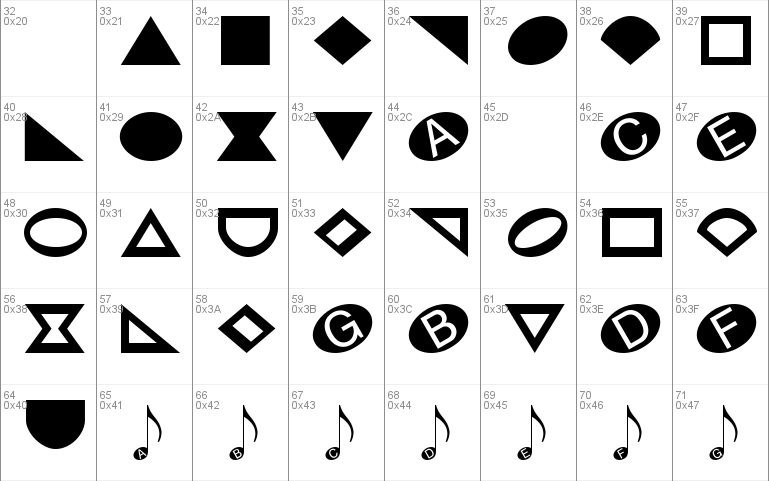
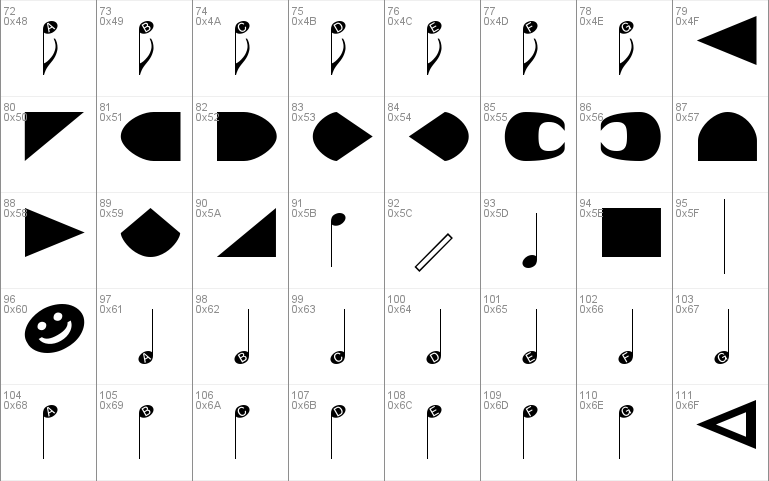
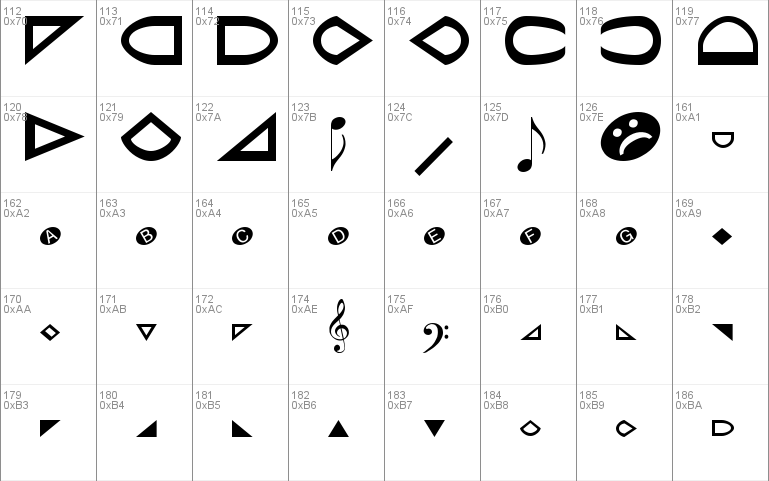
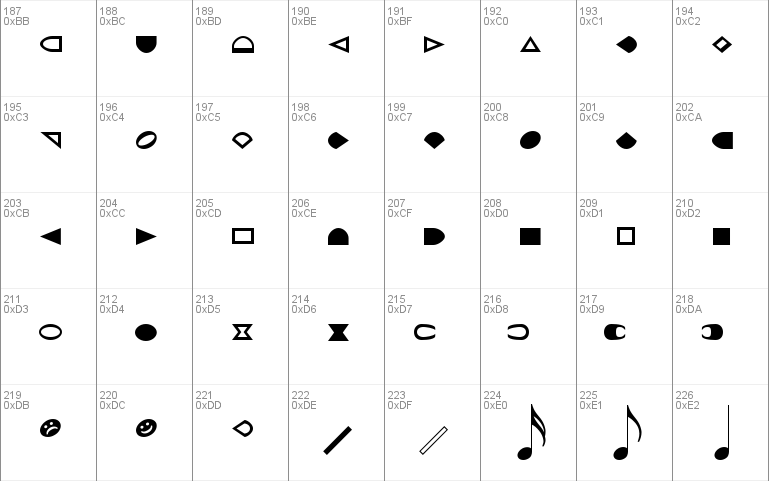
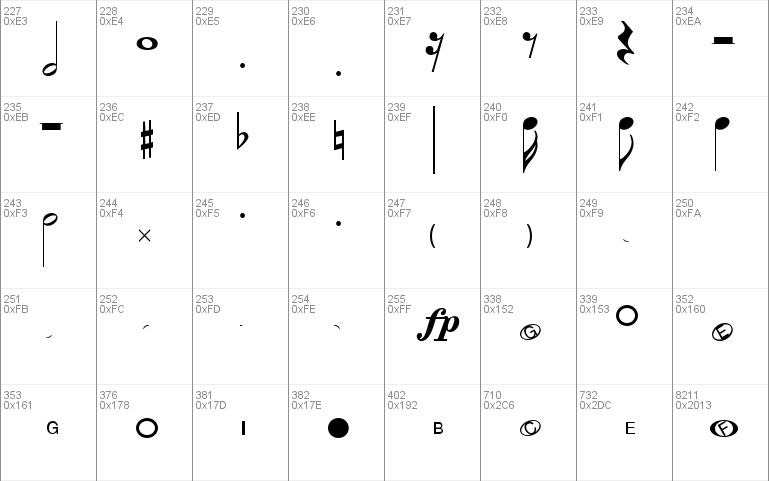

- Styles (1)
- Character Maps
- License






- Free for Personal Use
- Free for Commercial Use
- Modification Allowed
- Redistribution Allowed
Extended information
NoteHedz contains symbols used in most of the 4 or 7 shaped note systems for Sacred Harp, FaSoLa, Aiken, and Swan. You have to provide your own staff and stems. In addition, letters A - G are enclosed in ordinary notes, and there are a number of other symbols.
Read more
NoteHedz font, version 1.70.
***** This information may be of interest to users of version 2 of the NoteWorthy Composer program:
NoteHedz contains a number of characters that are scaled and positioned to coordinate with
notation elements in NWC2, when this user font size is the same as the "staff size (in pixels)".
There may be some scripts that automate the use of these symbols. Check the Scriptorium.
These characters are located in the non-ASCII code range. They must be accessed from a character map.
Since the characters are small, a magnifying character map program (such as the free "Typecase")
is recommended for ease of use.
When placing NotHedz symbols as replacements for blank noteheads, in most cases place the cursor
just before the notehead, at the same level. Align left, at next note.
Some NoteHedz symbols are used for other purposes. For these, try align "best fit" or "preserve width."
There are also some musical symbols scaled to about 75% of their default sizes in NWC2.
These may be used to illustrate lead-in notes that are not part of the music itself.
For notes or rests with dots, choose the dot that best fits note placement (relative to staff lines).
Codes decimal 249 - 254 contain small arcs that may be used to contruct dashed ties.
Code decimal 45, the hyphen, is a thin-width space. It may be useful for positioning.
Code decimal 239 is a measure bar.
Code decimal 142 is a "small whiteout," when used as white color.
Code decimal 128 is a "large whiteout," when used as white color. It is vertically offset.
For whiteout to be effective, it must be used on a layered staff that follows the notation to be whited out.
This has to do with the order of drawing in NWC2. If you simply place a whiteout on the same staff
in front of the notation to be whited out, then it won't work.
Codes decimal 158 and 159 may be used for circular note heads.
Codes decimal 155 and 156 may be sued for circular note heads that will enclose a letter.
These circles are vertically offset.
Code decimal 158 may also be useful as a circular whiteout.
-------------------------------------------
Although many of the symbols have been scaled for compatibility with the NWC2 program,
this font is not part of the NWC2 package. Use at your own risk.
-------------------------------------------
README for NoteHedz font.
NoteHedz is Copyright �2005 by Robert Allgeyer.
http://www.icogitate.com/~ergosum
It is offered with free public license, AS-IS with NO WARRANTY EXPRESS OR IMPLIED.
User accepts all risk of use. No support is offered.
First public release version 1.01, February 5, 2005.
Experimental versions 1.1 - 1.6 exhibited in late August - early September 2005.
If you have any of versions 1.1 - 1.6, discard them.
Version 1.7 released September 12, 2005
Version 1.7 contains additional characters that were not in the version 1.0.1 font.
No change has been made to any of the original characters.
This font was designed for Windows. It has also been tested using Knoppix Linux 3.6.
It may work (but has not been tested) on Mac OS-X.
The font has characters in all of the code locations 0020 - 007E (decimal 32 - 126) accessible
by ordinary keyboard, and in the non-ASCII range 00A1 - 00FF (decimal 161 - 255).
The additional characters (version 1.70) are in code locations 128-159 (decimal),
and are of interest to users of a particular program running on the Windows platform.
Other platforms may or may not be able to access the additional chanracters.
Symbols intended for shaped-note users are self explanatory.
If you don't know what shaped notes are, then most of the symbols are just geometric shapes.
Keystrokes a - g produce fully-formed, ordinary notes (stem up) with letters A- G enclosed in the notehead.
Keystrokes h - n produce the same notes, but with stems down.
The uppercase characters A - G and H - N are the same, but with a flag added to the note stem.
------------------------------------------


Comments